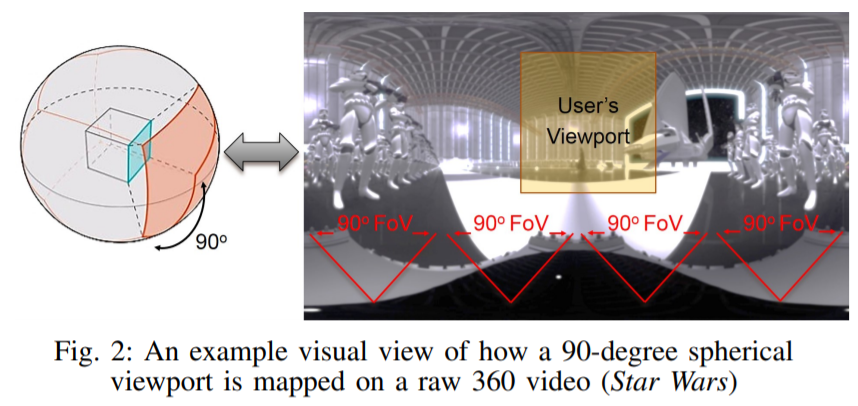Adaptive 360 VR Video Streaming: Divide and Conquer!
PubDate: Sep 2016
Teams: University of Illinois at Urbana-Champaign;Adobe Research
Writers: Mohammad Hosseini, Viswanathan Swaminathan
PDF: Adaptive 360 VR Video Streaming: Divide and Conquer!

Abstract
While traditional multimedia applications such as games and videos are still popular, there has been a significant interest in the recent years towards new 3D media such as 3D immersion and Virtual Reality (VR) applications, especially 360 VR videos. 360 VR video is an immersive spherical video where the user can look around during playback. Unfortunately, 360 VR videos are extremely bandwidth intensive, and therefore are difficult to stream at acceptable quality levels. In this paper, we propose an adaptive bandwidth-efficient 360 VR video streaming system using a divide and conquer approach. In our approach, we propose a dynamic view-aware adaptation technique to tackle the huge streaming bandwidth demands of 360 VR videos. We spatially divide the videos into multiple tiles while encoding and packaging, use MPEG-DASH SRD to describe the spatial relationship of tiles in the 360-degree space, and prioritize the tiles in the Field of View (FoV). In order to describe such tiled representations, we extend MPEG-DASH SRD to the 3D space of 360 VR videos. We spatially partition the underlying 3D mesh, and construct an efficient 3D geometry mesh called hexaface sphere to optimally represent a tiled 360 VR video in the 3D space. Our initial evaluation results report up to 72% bandwidth savings on 360 VR video streaming with minor negative quality impacts compared to the baseline scenario when no adaptations is applied.


